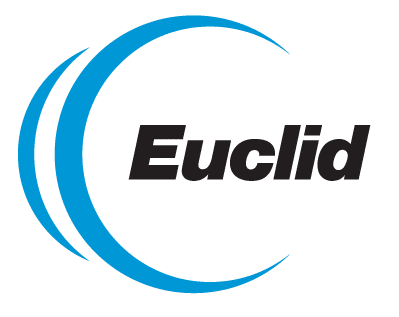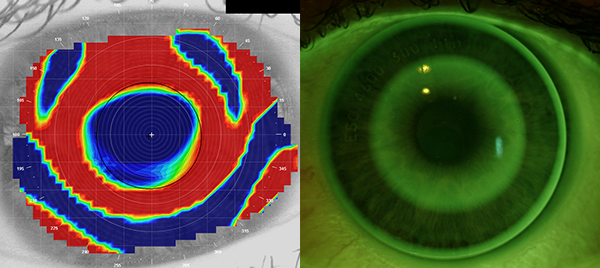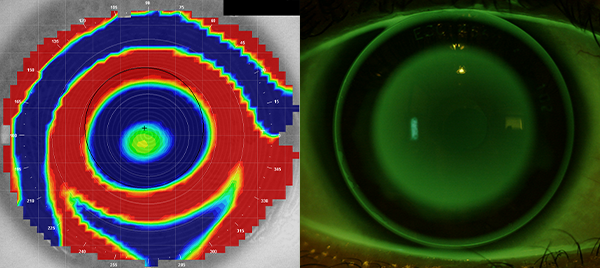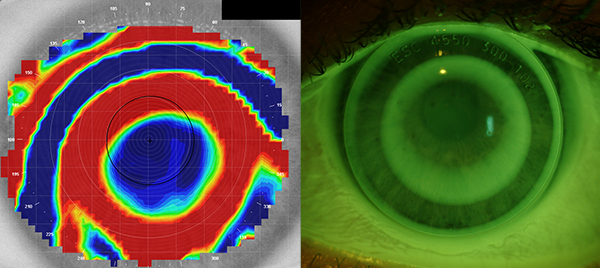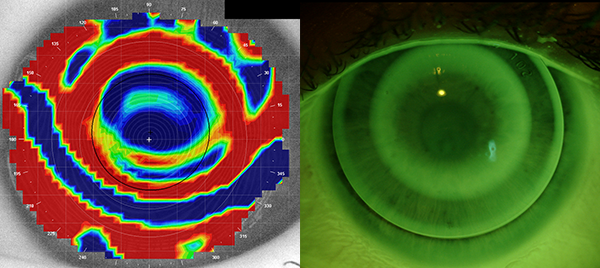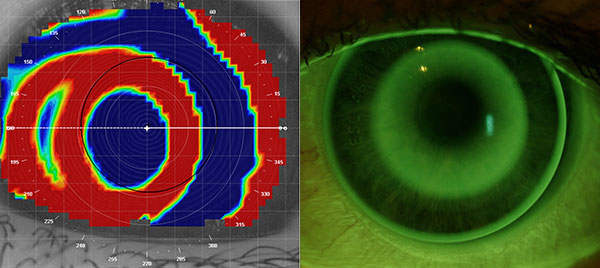
Module 5
FITTING & ADJUSTMENTS
At the end of this module, you should be able to:
- Identify the ideal Ortho-K fit
- Describe the most common causes of insufficient treatment with Euclid lenses
- Outline the clinical adjustments made to resolve each cause of insufficient treatment
Ideal Lens Fit (1/7)
Euclid lenses have an 87% first fit success*, which means that your first lens will likely be your last, with no lens modifications required! A properly fitted Euclid lens will show a well centered position and provide the patient with their desired correction. On topography, a well centered treatment pattern is seen as a complete red ring around the central cornea, commonly referred to as a “bulls-eye.”
It is recommended that you allow 7-14 days of lens wear before considering any lens changes, as it can take time for the lenses to achieve the total desired treatment. If the patient is not experiencing continuous treatment improvement at each visit or the lenses demonstrate the clinical symptoms shown on the next slides, consider altering the fit.
*Based on internal data
Central Island (2/7)
Central islands arise when a lens has excessive sagittal height. On corneal topography, central islands are usually characterized by a steep central “island,” surrounded by a flatter area of treatment. To resolve, flatten the reverse curve by 0.2mm (1.00D).
Inferior Decentration (3/7)
Inferior decentration is caused by a too steep fit that shows excessive sagittal height vertically. To resolve, flatten the alignment curves (AC1 and AC2) by 0.1mm (0.50D). If the lens is a Euclid Toric, you may also achieve the same effect by reducing the lens toricity by 0.50D.
Superior Decentration (4/7)
Superior decentration is seen when a lens has inadequate sagittal height and is too flat. To resolve, steepen the alignment curves (AC1 and AC2) by 0.1mm (0.50D). If the lens is a Euclid Toric, you may also achieve the same effect by increasing the lens toricity by 0.50D.
Lateral Decentration (5/7)
Lateral decentration usually indicates that the lens diameter is too small. To resolve, consider increasing the overall lens diameter (OAD) by 0.4mm. When selecting the OAD of a lens, make sure that the OAD is not larger than the patient’s HVID.
Insufficient Treatment(6/7)
In addition to the common lens decentration issues we’ve discussed, a lens can sometimes provide insufficient treatment even if it is displaying the appropriate bulls-eye topography. To resolve insufficient treatment, increase the target power of the lens in the amount of the patient’s uncorrected refraction.
Summary (7/7)
In this module, we discussed:
- A well-fitted Euclid lens will show a “bulls-eye” ring around the central cornea
- The most common causes of insufficient treatment with Euclid lenses are central islands and lens decentration
- To resolve central islands, flatten the reverse curve by 0.2mm
- To resolve inferior decentration, flatten the alignment curves by 0.1mm
- To resolve superior decentration, steepen the alignment curves by 0.1mm
- To resolve lateral decentration, increase the overall lens diameter by 0.4mm
